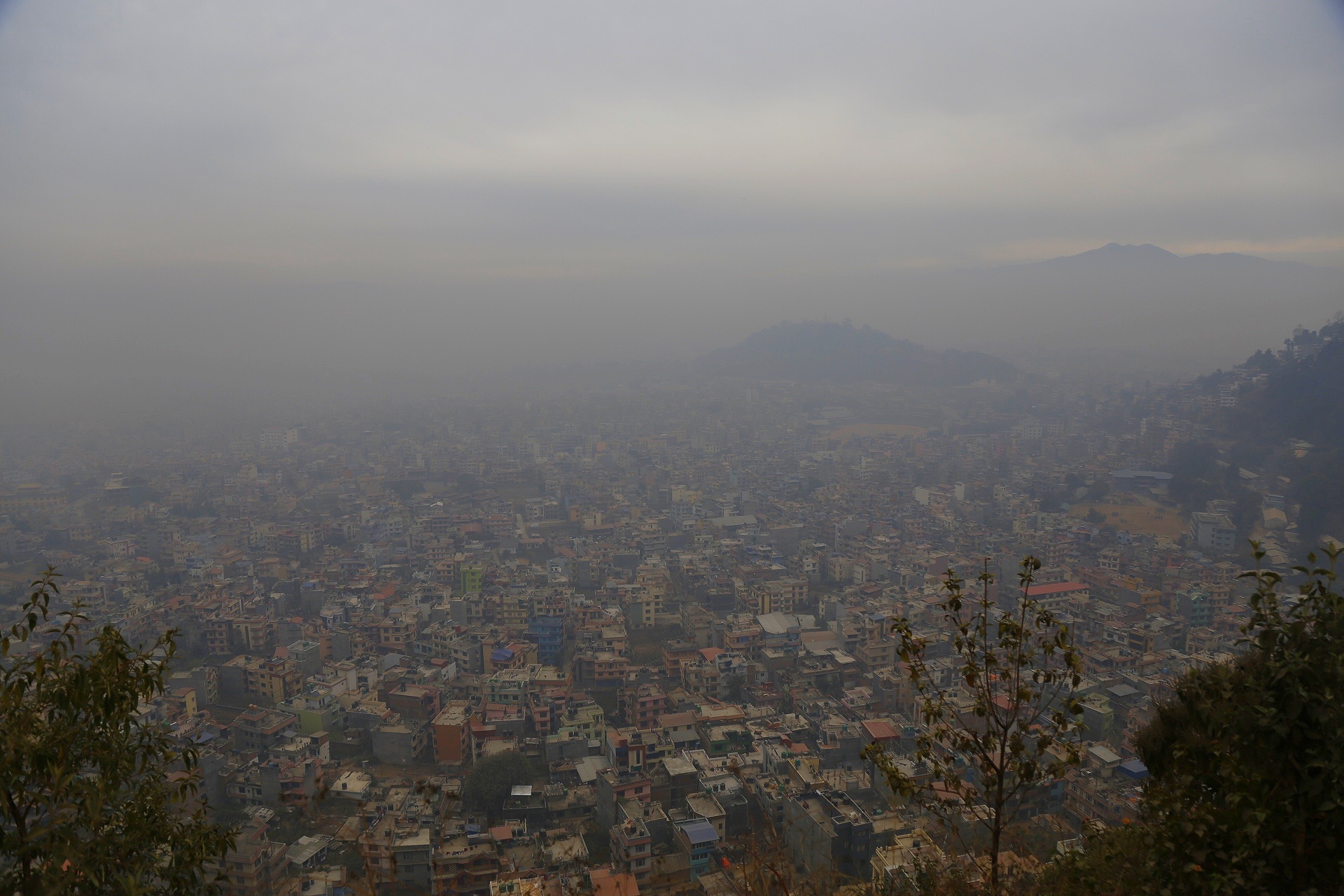Report on Air Quality Action Day in Illinois and its Relation to Sustainable Development Goals
1.0 Executive Summary
The Illinois Environmental Protection Agency (EPA) has issued a Red Forecast Air Pollution Action Day for the Rockford region and other areas of northern Illinois, extending statewide. The alert, prompted by smoke from Canadian wildfires, highlights critical challenges related to public health, environmental stability, and sustainable community management. This event directly intersects with several United Nations Sustainable Development Goals (SDGs), particularly SDG 3 (Good Health and Well-being), SDG 11 (Sustainable Cities and Communities), and SDG 13 (Climate Action).
2.0 Incident Analysis and Public Health Impact
The declaration of an Air Pollution Action Day signifies that air quality has reached the “Unhealthy” category on the Air Quality Index (AQI). This situation poses significant health risks, demanding immediate public response to mitigate adverse effects.
2.1 Alignment with SDG 3: Good Health and Well-being
The primary objective of the alert is to protect human health, a core tenet of SDG 3. Poor air quality presents a direct threat to the well-being of all citizens, with heightened risks for specific demographics.
- Vulnerable Populations: Children, older adults, and individuals with pre-existing pulmonary or respiratory conditions are identified as being at high risk.
- Health Recommendations: To safeguard public health, authorities advise avoiding prolonged or strenuous outdoor activities.
- Protective Measures: The public is encouraged to reschedule activities indoors, choose less strenuous exercises, and reduce time spent outdoors to minimize exposure to harmful pollutants.
3.0 Broader Implications for Sustainable Development
The air quality crisis extends beyond immediate health concerns, touching upon the foundational principles of climate resilience, sustainable urban living, and ecosystem preservation.
3.1 Connection to SDG 11 and SDG 13
This event underscores the importance of building resilient and sustainable communities (SDG 11) that can adapt to the growing challenges posed by climate change (SDG 13).
- Sustainable Cities and Communities (SDG 11): The Air Pollution Action Day serves as a critical public information system, enhancing community resilience by providing timely warnings about environmental hazards. Effective communication and public guidance are essential for sustainable urban management.
- Climate Action (SDG 13): The root cause of the pollution—widespread wildfires—is increasingly linked to climate change. This transboundary air pollution event demonstrates that climate impacts are not confined by borders, necessitating coordinated international climate action.
- Life on Land (SDG 15): The wildfires causing the smoke are a direct threat to terrestrial ecosystems, biodiversity, and forest health, highlighting the interconnectedness of atmospheric health and land preservation goals.
4.0 Official Recommendations and Resources
Citizens are advised to stay informed and take precautionary measures to protect their health and well-being. The following actions are recommended:
- Monitor real-time air quality data through official sources such as the AirNow website.
- Follow guidance provided by the Illinois EPA to understand local conditions and risks.
- Prioritize the health of vulnerable individuals by ensuring they remain in filtered, indoor environments.
Addressing the challenges of air pollution is integral to achieving the 2030 Agenda for Sustainable Development, requiring a concerted effort from government agencies, communities, and individuals to foster a healthier and more sustainable environment.
SDGs Addressed in the Article
The issues discussed in the article, primarily concerning air pollution from wildfires and its impact on public health and daily life, are directly connected to the following Sustainable Development Goals (SDGs):
-
SDG 3: Good Health and Well-being
This goal is addressed through the article’s focus on the health risks associated with poor air quality. The text explicitly mentions that the “unhealthy air quality alert” poses a risk, especially to “Children, older adults and those with pulmonary or respiratory diseases like asthma,” and recommends actions to protect human health.
-
SDG 11: Sustainable Cities and Communities
The article connects to this SDG by highlighting the environmental quality within a specific region (“Rockford region and other areas of northern Illinois”). The declaration of an “Air Pollution Action Day” is a direct measure to manage the adverse environmental impact on the community, which is a key aspect of creating sustainable living environments.
-
SDG 13: Climate Action
This goal is relevant because the source of the air pollution is “Canadian wildfire smoke.” Wildfires are increasingly recognized as a climate-related natural hazard. The article describes a response system (the “Air Pollution Action Day” alert) designed to help the community adapt to and build resilience against such hazards.
Specific SDG Targets Identified
Based on the article’s content, the following specific targets can be identified:
-
Target 3.9: By 2030, substantially reduce the number of deaths and illnesses from hazardous chemicals and air, water and soil pollution and contamination.
The article directly relates to this target by discussing the “unhealthy air quality” and issuing health warnings. The recommendations to “avoid prolonged activities or heavy exertion outdoors” and move activities indoors are aimed at preventing illnesses caused by air pollution.
-
Target 11.6: By 2030, reduce the adverse per capita environmental impact of cities, including by paying special attention to air quality and municipal and other waste management.
The entire article is centered on this target. The Illinois Environmental Protection Agency’s declaration of a “Red Forecast Air Pollution Action Day” is a direct action focused on managing and communicating the state of air quality in the affected regions.
-
Target 13.1: Strengthen resilience and adaptive capacity to climate-related hazards and natural disasters in all countries.
The article demonstrates this target in action. The wildfire smoke is a climate-related hazard, and the “Air Pollution Action Day” functions as an early warning system. The public guidance on how to respond (“Choosing less strenuous activities,” “Shortening the amount of time you are active outdoors”) represents an effort to strengthen the community’s adaptive capacity to this hazard.
Indicators for Measuring Progress
The article mentions or implies specific indicators that can be used to measure progress toward the identified targets:
-
Indicator for Targets 3.9 and 11.6: Air Quality Index (AQI)
The article explicitly mentions the Air Quality Index (AQI) as the tool used to measure air pollution. It states, “action days are declared when the Air Quality Index gets into the unhealthy ranges.” The AQI, which measures pollutants like particulate matter found in wildfire smoke, serves as a direct indicator for Target 11.6.2 (“Annual mean levels of fine particulate matter (e.g. PM2.5 and PM10) in cities”) and is used to assess the health risks related to Target 3.9.
-
Indicator for Target 13.1: Implementation of a Local Disaster Risk Reduction Strategy
The article implies the existence of an indicator for this target through its description of the government’s response. The system of declaring an “Air Pollution Action Day” by the Illinois EPA is a clear example of a local disaster risk reduction strategy being implemented. This corresponds to indicator 13.1.3 (“Proportion of local governments that adopt and implement local disaster risk reduction strategies”). The alert system and associated public health advice demonstrate a formal process to manage the risks from a natural hazard.
Summary of Findings
| SDGs | Targets | Indicators |
|---|---|---|
| SDG 3: Good Health and Well-being | 3.9: Substantially reduce the number of deaths and illnesses from air pollution. | The health recommendations issued for vulnerable groups (children, older adults, those with respiratory diseases) due to “unhealthy air quality.” |
| SDG 11: Sustainable Cities and Communities | 11.6: Reduce the adverse per capita environmental impact of cities, paying special attention to air quality. | The Air Quality Index (AQI) is used to declare an “Air Pollution Action Day” when air quality reaches “unhealthy” levels. |
| SDG 13: Climate Action | 13.1: Strengthen resilience and adaptive capacity to climate-related hazards and natural disasters. | The implementation of an early warning system (the “Air Pollution Action Day” alert) in response to wildfire smoke. |
Source: wifr.com







